Robert Hugh Levien was born on the 6 July 1917, in Tonbridge, Kent. He was the son of Robert John Goldsmid Levien (1873-1937), and Edith Alicia Blomefield of Jewish descent.
He attended Reading School from September 1926 to December 1935, and the Royal Military College, Sandhurst between January 1936 and July 1937.
He was commissioned into the 2nd Bn, The Lancashire Fusiliers on 14 July 1937, and then went to the 1st Bn, The Lancashire Fusiliers on the 4 December 1937. The 1st Bn was then stationed in the Far East and he served with them in North China and on the North-West Frontier of India. However, he surrendered his commission on the 29 July 1939.
Realising the worsening situation in Europe he decided to enlist and joined The Queen’s Own Royal West Kent Regiment on the 2 September 1939, at Tunbridge Wells. [1] He was sent to the Infantry Training Centre, at Maidstone, until the 7 February 1940 when, after completed his training, he was sent to the 12th Holding Battalion. However his Commanding Officer found out about his previous service, had him made up to acting-unpaid Lance Corporal and was used as an Instructor. After several weeks, of this, and being thoroughly fed up he requested a posting to France, informing the CO of how awkward he could start to be and that the CO would want rid of him!
On the 4 April 1940 he set out for France and landed at Le Havre, where he was posted to No 2 Infantry Base Depot at Rouen, arriving there on the 12 April, where he joined ‘Vickforce’, so named after the Commanding Officer, Lieut-Colonel. Charles Vicary, the Reinforcement Officer of the BEF. ‘Vickforce’ was made up of five composite ‘battalions’ of men from the Base Depot at Rouen, which were in turn named after their own Commanding Officers, Perowne, Wait, Ray, Davie and Meredith. [3] It would appear that Lieut. Levien served in the ‘battalion’ commanded by Davie. His unit took up position at Charleval on the River Andelle approx. 5 miles east of Rouen, to guard a bridge. The Company that L/Cpl. Levien was in was commanded by Capt. Bassett of the Royal West Kent’s, and the three Platoon’s were made up of one from the ‘Buffs (The East Kent Regiment), one of the Queens’ Royal Regiment and another from the The Royal West Kent’s.
By the end of May the German Forces were approaching the Rouen area and a fighting withdrawal began. Lieut. Levien’s unit moved back through Forges-les-Eaux, Neufchatel-en-Bray and Saint-Martin-l’Hortier. By the 10/11 June they had been pushed all the way back to Saint-Valery-en-Caux, where it appeared they were trapped. However, on the 12 June he and a small group of men spotted a small cargo ship to the East and made their way to it. They boarded the ship and were eventually transported to Southampton. From there he was transported by train to Winchester.
Upon arrival there he was posted to the 14th Holding Battalion at Dover, until the 21 November 1940, when he was posted to the 10th Bn, The Queen’s Own Royal West Kent Regiment.
He was serving as a Sergeant in this Regiment, when he saw the call for volunteers for the formation of the 1st Parachute Brigade, and attended the brigade’s first parachute training course held at RAF. Ringway between 3 and 15 November 1941, by getting himself attached to ‘C’ Company, 2nd Parachute Battalion. “Arrived at Hardwick on 4-9-41 and was posted to 2nd Parachute Battalion as Intelligence Sergeant. With the information available in Battalion HQ. I got myself transferred to ‘C’ Company to be in the first lot of the 2nd Parachute Battalion to do my jumps. Course Number not known, but I rather think I went with ‘C’ Company to Ringway about November 6th. I have circumstantial evidence that this was followed by 14 days leave, until Dec 3rd. I was at Hardwick over Xmas.” [2]
Sgt. Levien returned to RAF Ringway for the second advanced course of parachuting in January 1942. Unfortunately he fractured his ankle on a balloon jump which put him out of action for two months.
From his own account: “My personal record shows that on 4 September 1941 I travelled from Beverley, to Chesterfield, leaving my 10th Bn, The Queens Own Royal West Kent Regiment. At Chesterfield railway station we were ferried to the camp at Hardwick where there were many newly-built red brick huts lined along partially constructed roads.
As a Sergeant I was one of the first in the queue to report and was welcomed by a Major full of jocularity who enquired what Regiment I was from, in spite of the fact that we all had our own cap-badges. He made a most offensive remark, mispronouncing the County, accompanied by an inane cackle. On being told that I had been the Intelligence Sergeant of the unit I came from, he said something like ‘Oh, I think we still have a vacancy for one of those chaps in the 2nd Battalion. You had better trot down there and see how you fit in.’ So I followed his directions and was duly taken on in that capacity with ‘Dicky’ Ashford at the Intelligence Officer.
I didn’t really have any duties, and made out my own programme, which mainly consisted of joining a squad undergoing intensive PT and synthetic training under qualified parachutists. I was pretty fit at the time and so coped without undue strain. I moseyed around Bn HQ a bit each day to make sure I kept up to date with what was going on, and after parades if I still had the price of a few pints I fairly often took the free transport provided into Chesterfield. As soon as I discovered that ‘C’ Company was to be the first to go to Ringway I got myself a temporary posting to that Company.
We were still all wearing our separate forms of Parent Unit headgear and Regimental cap-badges, collar-dogs etc. On November 6 I went with ‘C’ Company to Ringway and did my qualifying jumps, and a couple more formation drops with schemes at the end. Sometime shortly after, Captain Ashford took over as Adjutant and Lt Peter Nauomoff was appointed as the new IO.
In January 1942 I was again at Ringway and doing a jump at Tattoo Park with a rising wind which would normally have caused cancellation but as I was in the last stick of the Company to drop it was allowed to go on. I had the misfortune to land during a gust of wind swinging me violently, with my insteps astride a railway line, and broke my left leg and 4 bones in that ankle.
By the time I managed to work my way back to the Bn it was August and they were stationed at Bulford.” [4]
On the 28 October 1942 he was posted to the Depot & School Airborne Forces at Hardwick Hall. In a letter to the Airborne Forces Museum, Aldershot in July 1997 he gave some more details of what happened to him: “Then I returned to Ringway for training jumps with schemes following, but cannot recall if this was with ‘C’ Company. Anyhow, only being an attached member of that Company I was with some ‘odds and sods’ in the last stick. Whitley’s again, of course, and the date January 15th. The day was well below freezing, so there was absolutely no moisture in the atmosphere to retard the decent of the ‘chute and the wind was increasing as time went on. It would have been a case of cancellation if each stick was considered on its own, but as part of a scheme the risk was taken to continue. The wind was gusting as well.
At that time the far end of Tatton Park was very boggy and a light railway had been laid out to fill it with ashes and cinders by truck. As I came down, fast, I had to turn to face back to the wind, so had both arms occupied and could do nothing to arrest my swinging and landed (I estimate at a good 50mph) with my insteps slap across the rail. My bum made a good job of breaking my lower left fibula and 4 bones in my ankle.
I was carted off to Davyhulme Hospital, where they diagnosed only the leg break. I then went to Didsbury Convalescent Home and managed to wangle leave to my home in Pembury, Kent, where it happened that my family knew the Dean of Guys Hospital, who also lived there and Guys Hospital had evacuated from London to Pembury Hospital. So I was able to ‘fiddle’ my way into Pembury Hospital, where they established the full extent of the breakages.
It took a lot more wangling to get myself passed A.1. and work my way back to the 2nd Para Battalion, which I managed about August 25, 1942, when they were stationed at Bulford and were shortly to invade North Africa.
The point of continuing my saga is that I had not yet finished with Ringway. I was sent on a WOSB (War Office Selection Board), was commissioned and from Hardwick got my name on the next draft to North Africa, which we all knew was the last to reinforce 1st Para Brigade. We were immediately given embarkation leave, but I protested that I must have a trial jump before the possibility of jumping next into action. I was told, “you are getting para pay and are now on leave – nothing to do with us”. So, while on leave I went up to Ringway and made my request; where the RAF just howled with laughter and declared it was the best made-up excuse they had had so far. Eventually I managed to persuade them of the genuineness of my history and was allowed two jumps the next day.
I was 2/Lt. R.H. Levien (73127 – yes I had resigned my commission before the war and got my old number back). I was re-commissioned on 15 April 1943, so the date of my last two jumps from Ringway must have been only a few days later. I seem to remember that the first stick I jumped with I judged to be assorted SOE men.”
The newly promoted 2nd Lieut. Levien was posted to the 2nd Parachute Battalion, then in North Africa. Departing on the 15 May, he joined them on the 2 June 1943. By his own account he remained in North Africa until 13 September 1943, when the 2nd Parachute Battalion sailed to Italy.
Immediately distinguishable by his trademark handlebar moustache, ‘Loopy’ (as he had become known to his men) went onto serve with the battalion in Italy as Commander of the Anti-Tank Platoon. It was whilst the battalion was in Italy that a reorganisation took place and the Anti-Tank Platoon was converted to become the Assault Pioneer Platoon, which took place in October 1943. The Course for the conversion was to be run by the 1st Parachute Squadron, RE and ‘Loopy’ was ordered to attend an extra week on attachment with the Squadron for further instruction.
Along with the rest of the battalion he returned to England in December 1943 and was initially billeted at Stoke Rochford Hall in Lincolnshire. However, when he went to ‘B’ Company he was billeted at Millfield House in Colsterworth. He was a member of the Battalion Rugby XV Team, which played the 1st Parachute Brigade HQ at Belton Park on the 3rd April 1944, and won by 20 points to 14.
“In North Africa I was O.C: Anti-Tank Platoon, which converted to Assault Pioneers while in Italy, and it was when in the Grantham area, pre-Arnhem, that I was posted to ‘B’ Company as O.C: 4 Platoon.” [5]
He commanded No 4 Platoon, ‘B’ Company at Arnhem, taking off from Saltby aerodrome on Sunday, 17 September 1944, aboard a Dakota of the 314th Troop Carrier Group, USAAF He dropped onto DZ. ‘X’ at Renkum Heath in Holland as part of the 1st Lift of Operation ‘Market-Garden’, with mission of securing the bridges over the Lower Rhine at Arnhem.
‘B’ Company were in reserve for the Battalion move and had the task of securing the Pontoon Bridge in Arnhem. However, on the advance the Battalion was held up at the Lower Oosterbeek Railway Station by enemy opposition and ‘B’ Company were tasked with clearing this position. Whilst 6 Platoon, under the command of Lieut. Peter Cane, moved through the actual station area, 4 and 5 Platoon were to provide support. Although the enemy were driven back, several casualties were incurred by ‘B’ Company, including Lieut. Peter Cane, who was killed.
The Company had now lost contact with the rest of the Battalion, both physically and by radio, but set off towards Arnhem again, with 4 Platoon in the lead. Eventually ‘B’ Company ended up at the St Elizabeth’s Hospital, having picked up a friendly Dutchman, who agreed to act as a guide for them. By now completely dark it was he who led the Company to the Pontoon Bridge area, where they took up defensive positions. Lieut. Levien and his Platoon took up positions in the comer house of a block of buildings to the north of the pontoon bridge. There was intermittent firing, by the enemy, all through the night and into the early hours of Monday, 18 September, when a message arrived by Runner from ‘B’ Company HQ for the Platoon to get ready to move.
Lieut. Levien sent one of his Sections on ahead, and then got the rest of the Platoon together to follow them. However, as they moved off they come under fire and at least one man was badly wounded, and then a tank, or armoured car, appeared, on the South side of the River and fired on them, and the Platoon became split up. Lieut. Levien was cut off from the rest of ‘B’ Company, along with 14 of his men, and ended up in Bakkerstraat. Here they eventually took cover in a house to avoid the Germans troops that seemed to be everywhere, but became completely surrounded by them.
Although Lieut. Levien was in touch with both the Dutch Underground and the men, including his own Company, at the Bridge by telephone it proved impossible to work out a way of avoiding the Germans and getting through to the Bridge in daylight. The decision was made to wait until dark, but by 23.00 hrs on that Monday night and unfortunately the Germans detected them in the house and short battle developed. However, early in the morning of Tuesday, 19 September, it became apparent that the British position was hopeless and Lieut. Levien made the decision to surrender.
When he was captured he stated on his POW questionnaire: “Was segregated from ORs at 10th S.S. Panzer Div H.Q., near Arnhem, for interrogation & also was interrogated by an SS Oberst. Otherwise normal routine”. [6] This was probably when he asked for a receipt for the items that were taken from him, when he was searched!
He was held as a Prisoner of War, initially in Stalag 12B at Hadamar near Limburg, in Germany, from the 25 September to the 2 October 1944. And then at Oflag 79 near Braunschwieg (Brunswick), Germany, arriving there on the 6 October, having spent four days in railway cattletrucks. He was liberated on the 12 April 1945. [6] He returned to England on the 2 May 1945, and then re-joined the 2nd Parachute Battalion on the 3 July 1945, after his survivors leave.
On the 27 July 1945 the 2nd Bn War Diary states: ‘Lieut Levien and 35 OR’s left the Bn to take part in a Film of Operation MARKET, which is being staged at ARNHEM. Nearly all personnel took part in the actual operation.’
He would remain in Holland until the 19 October 1945, when he returned to England, but he remained with the Arnhem Film Unit until the 13 January 1946. He was then posted to the 1st Parachute Brigade Depot until the 28 February 1946, when he was posted to the Army Air Corps Depot.
He was granted a Class ‘A’ Release on the 5 June 1946.
On the 13 August 1948 he was granted a Territorial Army Commission in The Cheshire Regiment in the rank of Lieutenant, with seniority. Then, after being transferred to The Royal Fusiliers, he was promoted Captain on the 13 November 1952 and then to the rank of Major on the 12 January 1956. Finally he was placed on the Unattached List 30 April1961 and transferred to the Territorial Army Officers Reserve 30 April 1962.
He was awarded the Territorial and Efficiency medal, which was published in the London Gazette on the 15 November 1960.
‘Loopy’ had married Bridget ‘Biddy’ Ann Cattell at Fakenham, Norfolk in 1947, and they had three sons. ‘Biddy’ Levien died on the 18 March 1994.
Robert Hugh ‘Loopy’ Levien, who was a staunch member of the Parachute 2 Club and the Arnhem 1944 Veterans Club, died at Wells Next The Sea, Norfolk on the 17 October 2004.
For further reading about his activities at Arnhem see:
‘B Company Arrived’, by David G van Buggenum, RN Sigmond Publishing 2003.Also ‘B Company Arrived The Men’, by David G van Buggenum. 2016.
NOTES:
[1] The Parachute Regiment, Transfer & Enlistment Book 04, page 6.
[2] Letter from R.H. Levien to Airborne Forces Museum, Aldershot. 22 July 1997.
[3] ‘1940. The Last Act’. By Basil Karslake. 1979.
[4] ‘Without Tradition’. By Robert Peatling. Page 24.
[5] Letter from R.H. Levien to Bob Hilton. 22 January 1996.
[6] POW questionnaire. April/May 1945.
For further reading about his activities at Arnhem see:
'B Company Arrived' by David G van Buggenham, RN Sigmond Publishing 2003.
Created with information researched by R Hilton
Read More



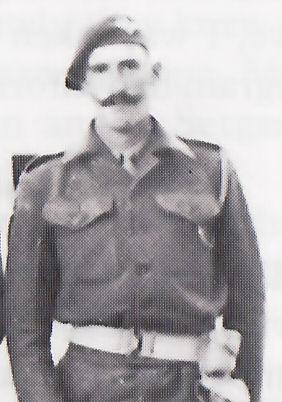
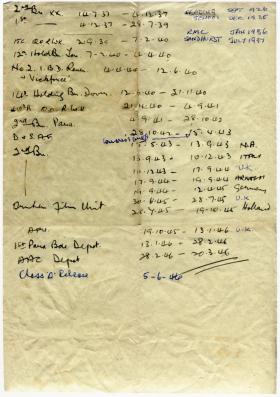
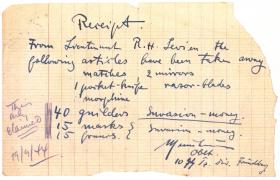
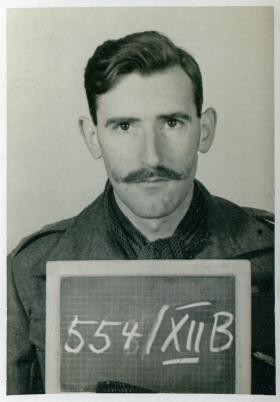
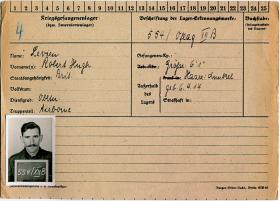
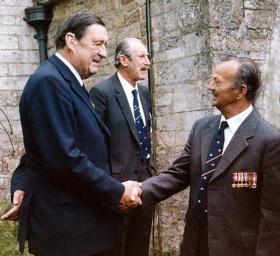
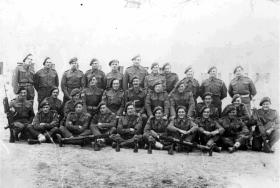
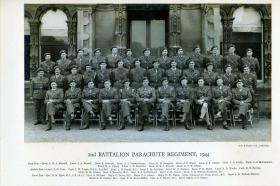
Latest Comments
There are currently no comments for this content.
Add Comment
In order to add comments you must be registered with ParaData.
If you are currently a ParaData member please login.
If you are not currently a ParaData member but wish to get involved please register.